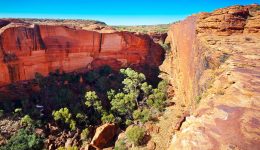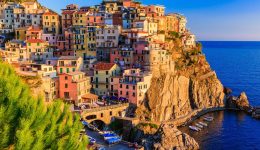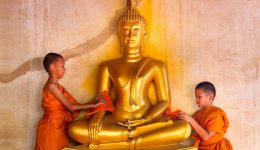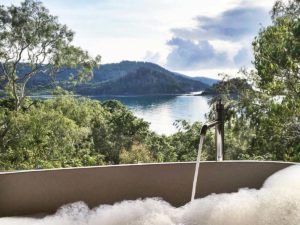Spotlight on Namibia

Namibia is a place of dramatic beauty and is a photographer’s dream. Colonial cities and charming seaside towns provide vivid contrast to the country’s harsh geography of rugged mountains, soaring red sand dunes, rocky coastlines, lunar landscapes and wildlife reserves. It is a visually fascinating country where some places have to be seen to be believed.
Namibia’s capital, Windhoek, and coastal town of Swakopmund provide the country with a little taste of Germany and is a ‘breath of civilized air’ when one’s senses have been exhausted by the wonders of open spaces and mother nature. Both are decorated with German architecture, cafes, entertainment venues and restaurants serving traditional German brews and meals. Swakopmund, in particular, offers a timely change of pace to those in need of a surf, quad-biking adrenaline adventures, and deep-sea fishing voyages.
Namibia has some of the continent’s best game reserves ranging from the wildlife-rich Etosha National Park, to the dune fields and desert plains of the Namib-Naukluft Park.
Etosha is dominated by a vast, shallow pan of silvery sand and is referred to by locals as ‘the great white place of dry water’. During the dry season, tens of thousands of animals converge to drink at the waterholes – the famous Big 5 and many more. The park (and its three rest camps of Okaukuejo, Halali and Namutoni) was designed to make the game viewing experience truly unique, with safe-viewing areas and seating allowing visitors to sit for hours at watering holes to watch animals take their turn to drink. To watch nature’s procession unfold only meters away from you, all with a tacit sense of courtesy, grace and order, is a surreal and humbling experience.
Sossusvlei’s magnificent dunes are sculpted by prevailing winds; their shifting curves and crests of brilliant red change to orange and then black as the sun moves across the sky and into the horizon. At over 300 meters high, they are a challenge to climb but a thrill to sand-board down! Namibia’s beauty extends beyond its scenic wonders and nowhere more so evident than in the culture and ancient traditions of its people. The Bushmen (San) people are a hunter-gatherer tribe living in the Kalahari Desert region and are the oldest inhabitants of southern Africa. Their unique use of ‘click’ language, and sub-Saharan desert existence are wonderful examples of ancient tribal traditions surviving the influence of modern times. The Himba people are nomadic pastoralists from Kaokoveld in Namibia’s remote northwest corner; some say it is the subcontinent’s last wilderness. Instantly recognisable by their red ochre coloured body paint, traditional leather skirts and intricate hairstyles, the Himba people inhabit a vast, rugged and almost impenetrable territory. The Herero people are proud cattle farmers who measure their wealth in cattle. Herero woman are easily identified by their large Victorian style dresses and horn shaped headwear (said to represent the horns of a cow). Ancient rock carvings, rare black-maned lions, dramatic gorges and canyons, seal colonies, and seasonal wildflower displays…just when you think you’ve seen it all Namibia unveils yet another wonder so impressive, words cannot convey!
When to go
The best time to visit southern Namibia is in winter time – between May and September – note, though, that the desert regions can be bitterly cold at this time of year. For game viewing in the southern Kalahari, the best time to go is in either May or June after the rains, when the wildlife returns to the region.
The best time to visit Etosha for game viewing is from May to September. Although it is cool, the animal viewing at waterholes is excellent. October to March is the best time to go to the Namib coast (including Walvis Bay and Swakopmund) as the weather is warm. Away from the coast, November and December are oppressively hot with sudden, thundery storms.

















